
The 1972 Spanish Grand Prix was a Formula One motor race held at Jarama on May 1, 1972. It was race 3 of 12 in both the 1972 World Championship of Drivers and the 1972 International Cup for Formula One Manufacturers. The race marked the first time two brothers raced together in F1 simultaneously, Emerson and Wilson Fittipaldi. The elder Fittipaldi was a last-minute substitute for Brabham's Carlos Reutemann, who had injured his ankle in a Formula 2 race the previous weekend at Thruxton, England. The 90-lap race was won by Lotus driver Emerson Fittipaldi after he started from third position. Jacky Ickx finished second for the Ferrari team and his teammate Clay Regazzoni came in third. After the race the World Drivers' Championship was tied at 15 points between Emerson Fittipaldi and Denny Hulme.

The 1974 United States Grand Prix was a Formula One motor race held on October 6, 1974, at the Watkins Glen Grand Prix Race Course in Watkins Glen, New York. It was race 15 of 15 in both the 1974 World Championship of Drivers and the 1974 International Cup for Formula One Manufacturers.

The 1975 Argentine Grand Prix was a Formula One motor race held at Buenos Aires on 12 January 1975. It was race 1 of 14 in both the 1975 World Championship of Drivers and the 1975 International Cup for Formula One Manufacturers. It was the twelfth Argentine Grand Prix and only the second to be held on the lengthened six kilometre version of the race track that runs out towards Curvon Salotto around the lake which lies to the north-east of the circuit.

The 1975 German Grand Prix was a Formula One motor race held at Nürburgring on 3 August 1975. It was race 11 of 14 in both the 1975 World Championship of Drivers and the 1975 International Cup for Formula One Manufacturers. It was the 37th German Grand Prix and the 34th to be held at the Nürburgring. The race was held over 14 laps of the 22.8-kilometre (14.2 mi) circuit for a race distance of 319 kilometres (198 mi).
The 1978 Canadian Grand Prix was a Formula One motor race held on 8 October 1978 at Montreal. This was the 16th and final race of the 1978 World Championship of F1 Drivers and the International Cup for F1 Constructors. It was Ferrari Driver Gilles Villeneuve's first victory in Formula One.

The 1981 FIA Formula One World Championship was the 35th season of FIA Formula One motor racing. It featured the 1981 Formula One World Championship for Drivers and the 1981 Formula One World Championship for Manufacturers, which were contested concurrently over a fifteen-race series that commenced on 15 March and ended on 17 October. The 1981 South African Grand Prix was open to Formula One entrants but was not part of the World Championship.
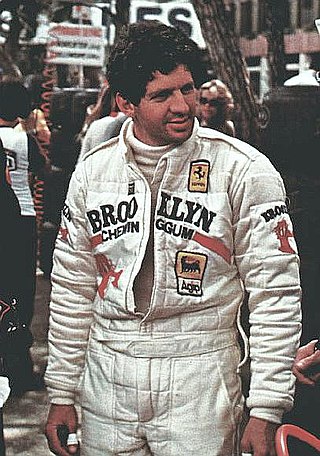
The 1979 Formula One season was the 33rd season of FIA Formula One motor racing. It featured the 1979 World Championship of F1 Drivers and the 1979 International Cup for F1 Constructors which were contested concurrently over a fifteen-round series which commenced on 21 January 1979, and ended on 7 October. The season also included three non-championship Formula One races.
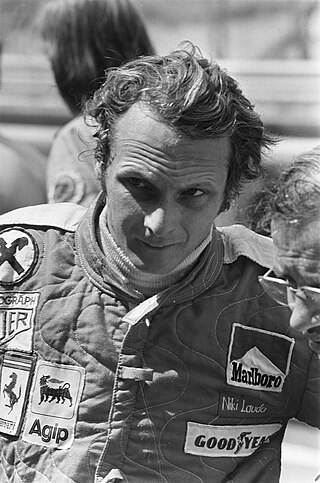
The 1975 Formula One season was the 29th season of FIA Formula One motor racing. It featured the 1975 World Championship of F1 Drivers and the 1975 International Cup for F1 Manufacturers which were contested concurrently from 12 January to 5 October over fourteen races. The season also included three non-championship Formula One races and a nine race South African Formula One Championship.
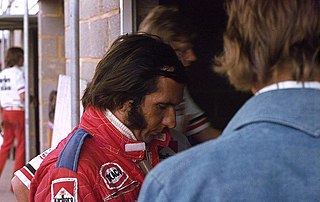
The 1974 Formula One season was the 28th season of FIA Formula One motor racing. It featured the 1974 World Championship of F1 Drivers and the 1974 International Cup for F1 Manufacturers, contested concurrently over a fifteen-race series which commenced on 13 January and ended on 6 October. The season also included three non-championship races.

José Carlos Pace was a racing driver from Brazil. He participated in 73 Formula One World Championship Grands Prix, debuting at the 1972 South African Grand Prix. He won one race, achieved six podiums, and scored a total of 58 championship points. He also secured one pole position.
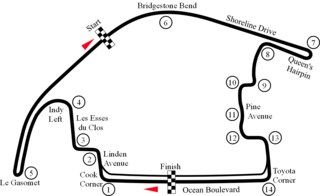
The 1978 United States Grand Prix West was a Formula One motor race held on April 2, 1978, at Long Beach, California.

The 1980 United States Grand Prix West was a Formula One motor race held on March 30, 1980, at Long Beach, California. It was the fourth round of the 1980 Formula One season. The race was the fifth United States Grand Prix West and the sixth street race to be held at Long Beach. The race was held over 80 laps of the 3.251-kilometre circuit for a total race distance of 260 kilometres.
Gary Thomas Brabham is a former professional racing driver and a convicted child sex offender from Australia.
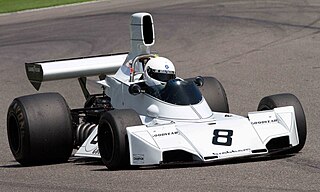
The Brabham BT44 was a Formula One racing car designed by Gordon Murray, Brabham's chief designer.

Carlos Alberto "Lole" Reutemann was an Argentine racing driver who raced in Formula One from 1972 to 1982, and later became a politician in his native province of Santa Fe, for the Justicialist Party, and governor of Santa Fe in Argentina.

John Marshall Watson, is a British former racing driver and current commentator from Northern Ireland. He competed in Formula One, winning five Grands Prix and was third in the 1982 championship. He also competed in the World Sportscar Championship finishing second in the 1987 championship. After his retirement from motorsport, he became a commentator for Eurosport's coverage of Formula One from 1989 to 1996. He currently commentates on the GT World Challenge Europe and commentated on the 2022 Miami F1 Grand Prix for F1TV.
Goldie Hexagon Racing was a motor racing team from the United Kingdom, founded by Paul Michaels. It raced in Formula One in 1974, using customer Brabham cars.

The Brabham BT7 is a Formula One racing car. It was raced by the Brabham Racing Organisation and several privateers from 1963 to 1966. A development of its predecessor, the Brabham BT3, the car proved to be competitive during 1963 and 1964, taking Dan Gurney to two victories. Technical issues prevented the BT7 from scoring better results. The car was equipped with a more reliable Hewland gearbox compared to the Colotti-Francis in the BT3. Malcolm Sayer from Jaguar Cars was consulted to give input for the revised chassis. The slick aerodynamics proved particularly strong at high speed circuits such as Monza or Spa. Its successor, the BT11, was a slightly altered BT7 aimed for customers such as Rob Walker or Jo Siffert.

The Brabham BT45 was a Formula One car designed by South African engineer Gordon Murray for the 1976 Formula One season. In upgraded BT45B and BT45C form, it also competed in the 1977 and 1978 seasons.
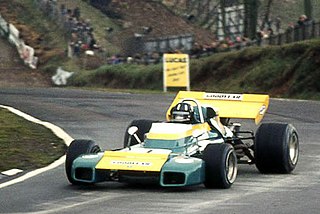
The Brabham BT34 was a Formula One racing car designed by Ron Tauranac, and used by Brabham during part of the 1971 and 1972 Formula One seasons.

















